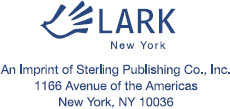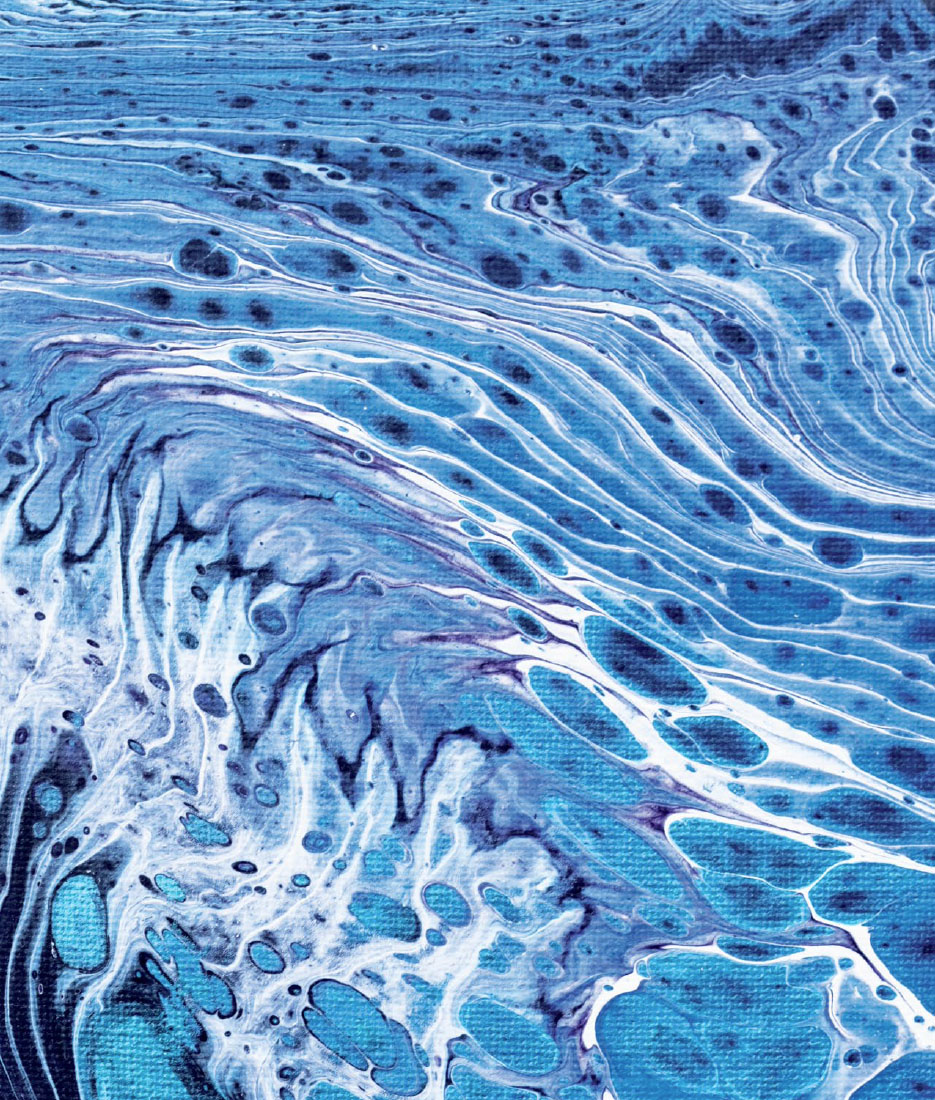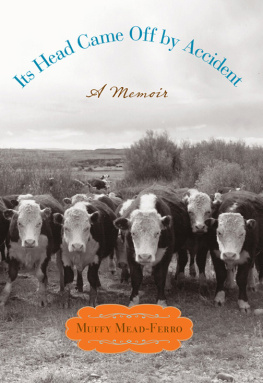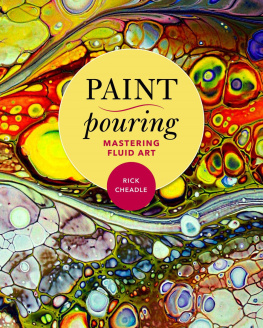Marcy Ferro - The Paint Pouring Workshop
Here you can read online Marcy Ferro - The Paint Pouring Workshop full text of the book (entire story) in english for free. Download pdf and epub, get meaning, cover and reviews about this ebook. year: 2019, genre: Home and family. Description of the work, (preface) as well as reviews are available. Best literature library LitArk.com created for fans of good reading and offers a wide selection of genres:
Romance novel
Science fiction
Adventure
Detective
Science
History
Home and family
Prose
Art
Politics
Computer
Non-fiction
Religion
Business
Children
Humor
Choose a favorite category and find really read worthwhile books. Enjoy immersion in the world of imagination, feel the emotions of the characters or learn something new for yourself, make an fascinating discovery.

- Book:The Paint Pouring Workshop
- Author:
- Genre:
- Year:2019
- Rating:5 / 5
- Favourites:Add to favourites
- Your mark:
- 100
- 1
- 2
- 3
- 4
- 5
The Paint Pouring Workshop: summary, description and annotation
We offer to read an annotation, description, summary or preface (depends on what the author of the book "The Paint Pouring Workshop" wrote himself). If you haven't found the necessary information about the book — write in the comments, we will try to find it.
The Paint Pouring Workshop — read online for free the complete book (whole text) full work
Below is the text of the book, divided by pages. System saving the place of the last page read, allows you to conveniently read the book "The Paint Pouring Workshop" online for free, without having to search again every time where you left off. Put a bookmark, and you can go to the page where you finished reading at any time.
Font size:
Interval:
Bookmark:



LARK CRAFTS and the distinctive Lark logo are registered trademarks of Sterling Publishing Co., Inc.
Text 2019 Marcy Ferro
Cover and photography 2019 Sterling Publishing Co., Inc.
All rights reserved. No part of this publication may be reproduced, stored in a retrieval system, or transmitted in any form or by any means (including electronic, mechanical, photocopying, recording, or otherwise) without prior written permission from the publisher.
ISBN 978-1-4547-1113-1
For information about custom editions, special sales, and premium and corporate purchases, please contact Sterling Special Sales at 800-805-5489 or .
sterlingpublishing.com
Cover and interior design by Shannon Nicole Plunkett Principal photography by Tim Sabatino; Additional project photography by Christopher Bain: Canvas texture by Dmytro Synelnychenko/iStock/Getty Images

H ave you ever wanted to try acrylic pouring but just dont know where to start? What materials do you need? What are the materials for, and how are they used? Can you use items and products you already have in your house? These and many other questions are answered in this book.
Acrylic pouring, also known as fluid painting or pour painting, is a unique form of art using the fluidity of acrylic paint to create beautiful pieces of abstract art. After years of trying various art techniques, including oil painting, mixed media, and watercolor painting, I came across acrylic pouring in videos online. I was immediately enthralled with the amazing colors and effects of fluid paints and just had to try it! I began experimenting with the techniques and realized what a fun, creative outlet acrylic pouring can be.
While acrylic pouring does take practice, it is an art form that doesnt require years of study and training to get amazing results. With so many easy and fun techniques, this art form is really for anyone who loves to create. It is a great activity to enjoy with friends and family and is an excellent way to relax or de-stress! One of my favorite things about paint pouring is that you will come up with a unique piece of art each time, and the result always has an element of surprise, even when youre using a specific technique.
The Paint Pouring Workshop is for beginners who want to get started with acrylic pouring as well as more experienced acrylic pourers simply looking to learn some new techniques to add to their arsenal. With acrylic pouring, you can create beautiful paintings and projects such as vases, clocks, jewelry, and more. The tutorials in this book are hands-on, so you will be making cool pieces of art while youre learning about acrylic pouring. This book covers all the tips, tricks, techniques, troubleshooting, and safety guidelines that I have learned through many experiments and some trial and error. Youll find everything you need to know to get started and to achieve paint-pouring success.
B efore you learn some of the fun techniques, Ill cover the basics of acrylic pouring. Here youll learn the theory and practical application of everything you need to know to get started with acrylic pouring, including materials, any necessary tools, setting up your work space, paint mixing, and more. Refer back to this section as often as needed to see the different paint pouring supplies you can use, check out mixing recipes and color combinations, and ensure you get the right consistency for your paint mixtures.
WHAT IS PAINT POURING?
Paint pouring, also known as acrylic pouring or fluid painting, is a method of abstract painting using the fluidity of paint to create free-flowing, marbleized artwork. Most acrylic paints are not fluid enough for pouring, so a large part of the paint pouring process involves mixing your paints until they reach a consistency that allows movement. Acrylic pouring can create many different effects, particularly cells, which are unique to fluid painting and often a desired effect. Cells are organic, roundish shapes created in the paint by air bubbles or differences in paint densities. For best results, a pouring medium is usually added to your acrylic paints with a small amount of water. You can also use various additives with the acrylic paint to create different effects and looks.
While acrylic pouring is currently a very popular painting technique, it has been around for quite some time. It is thought to have been created by Mexican artist David Siqueiros in the 1930s. Many artists throughout history, from Jackson Pollock to Stanley William Hayter, have used various forms of fluid painting, resulting in many of the pouring techniques we have today. Acrylic pouring is relaxing and fun and continues to spark creativity in artists of all types.
MATERIALS
There are many possible materials you can use for paint pouring, but keep it simple when youre first starting out and add to your toolbox as you go along. Most materials can be found at your local art store, though some items, such as silicone, may need to be purchased online.
Quick Start Guide
While this section covers a wide variety of materials you can use, you may just want to skip all that and start painting right away. Here is the most simplified materials list. It contains things you probably already have, so feel free to skip the theory and jump right to Mixing Your Paint (.)
Canvas, wood board, or tile
Any acrylic paint
Any liquid glue
Water
Gloves
Containers for mixing and pouring paint
Stir sticks
Acrylic Paint
Acrylic paint is a fast-drying, water-based paint that can be used for a wide variety of art projects. There are many types and brands of acrylic paints that you can use for acrylic pouring, each with their own unique qualities. As a general rule, any acrylic paint will work, though some are better than others. To save money, I recommend starting out with craft paints during your initial practice paint pours, then graduating to artist-quality paints. Once youve practiced using different brands and types of acrylic paint, you will notice a vast difference in brightness and color between higher quality paints for artists and lower quality paints.
When youre first starting, I recommend using primary colorsblue, yellow, and redalong with white and black. With the basic colors, you can mix almost any other color youd like. You will usually go through white and black the most quickly, so its beneficial to purchase those colors in larger quantities.
The type of acrylic paint you use is your personal preference. You dont have to use only one kind of paint, even within the same painting. You can mix and match as many types as you want. Here are some examples of types of paint that you may see. (The labels on the paints will generally specify the type on the front of the container.)
Fluid or High-Flow Paints
These acrylic paints are highly pigmented and fluid, meaning they are more liquid and flow more easily. They are great for acrylic pouring, as their colors are bright and bold, and their consistency greatly eliminates the need to add water or another thinning agent. Due to their high quality, they can be more costly.
Font size:
Interval:
Bookmark:
Similar books «The Paint Pouring Workshop»
Look at similar books to The Paint Pouring Workshop. We have selected literature similar in name and meaning in the hope of providing readers with more options to find new, interesting, not yet read works.
Discussion, reviews of the book The Paint Pouring Workshop and just readers' own opinions. Leave your comments, write what you think about the work, its meaning or the main characters. Specify what exactly you liked and what you didn't like, and why you think so.









